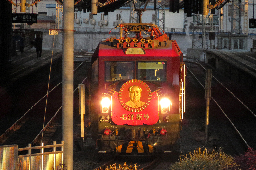It’s really confusing when he draws Trump 50 years younger but keep everyone else the same age. Also I see that he tried to butch up Vance, which makes him completely unrecognizable, I literally thought it was Don Jr.
Judge_Juche [she/her]
- 0 Posts
- 23 Comments

 15·1 month ago
15·1 month agoYa he pull that out of his ass one day and send a company wide email telling everyone that was the new standard, basically so he could win a Twitter argument. Which is insane becuase it would either make the trucks 100x more expensive or is just physically impossible becuase he didn’t specify what temperature he was talking about. Also, if anyone has seen a Cybertruck, it is immediately obvious that they don’t bother checking tolerances anyways.

 6·1 month ago
6·1 month agoI literally only have Minthara left in my evil playthrough and we have cast aside all pretense of the old morality and are revealing in our new perverse freedom.
However as a consequence the game is now really difficult becuase everyone, good or evil, hate us and want to kill us and I don’t think I can acutally finish it.

 35·2 months ago
35·2 months agoRoscosmos atleast still have all the plans and drawings for the Soyuz family. NASA literally can’t build another Saturn 5 rocket becuase all the companies that originally built it either merged or folded and most of the technical documentation is lost. NASA of course didn’t try and archive any of it becuase it was the intellectual property of the five thousand subcontractors they used

 291·2 months ago
291·2 months agoLol, I want Biden to stay the candidate becuase I think it will be really funny to see how bad it gets by November, also being constantly humiliated and abused for 5 months is the least that this man deserves.
AOC wants Biden to stay the candidate for much stupider and more childish reasons.

 12·3 months ago
12·3 months agoHe is still on the Bad Faith podcast branding even though he has not appeared on the show in 4 years, people have speculated that BGJ is contractually obligated to keep him on there and potentially has to give him some of the money.
If so, it kind of an impressive long con on Virgil’s (not his real name btw) part. Got popular on Chapo, siphon some of the audience onto a Patreon he has exclusive rights over, disappear after like 2 months of the show starting, and just keep collecting those Patreon bucks without doing anything.

 8·3 months ago
8·3 months agoFalse flag hologram with no inherent ideology

 8·3 months ago
8·3 months agoI usually try and solo bosses becuase I’m a Soulsborne pervert. But I was fighting Rellana last night and got her down to like 1% before dying. I wanted to go to bed, so I got the summon and used a Mimic Tear to just finish the fight.
The three-way curb stomping we did to her was … horrifying, like I was ashamed at how easily and completely we humiliated her. I felt so guilty that I betrayed the git gud lifestyle that I’m beelining to Elden Beast and NG++ today so I can do the fight properly.

 10·4 months ago
10·4 months agoThey almost reopened the mine in Asbestos, the Quebec Liberal Party had a deal all ready to reopen it with government money in an attempt to appeal to blue-collar workers. But the Parti Quebecois (the socdem party) won the election before they could implement it and diverted the money to economic diversification programs.

 9·5 months ago
9·5 months agoInsane to complain about historical accuracy with Assassin’s Creed, like Yasuke (an acutal historical figure) is woke nonsense but the eternal war between the Assasins and the Templars (and aliens I think) is fine.
Most of these extremely long continuous truss bridges were built in the US in the 70s and 80s because they were pretty cheap for such a long bridge. And people have recognized that they are uniquely vulnerable becuase a single point of failure could potentially take down the whole bridge. However a lot of them haven’t had any retrofits to mitigate this issue.

 38·6 months ago
38·6 months agoGod it’s so embarrassing how many online libs are suddenly bridge engineers now and trying to explain away this disaster. Like their only explanation for this is that sometimes massive ships will just hit and collapse bridges and that fine.
Like no reflection on why a 50 year old bridge didn’t have any modern protective measures, why massive Panamax ships are apparently seconds away from catastrophic impact every time it passes this thing, how they even let a ship on the verge of a double power failure into the harbor in the first place.

 9·7 months ago
9·7 months agoNASAs version of this is called StarTram, it’s feasible but there are some major technical hurdles.
In the prototype stage, the launch velocity at the end of the gun would not be anywhere near the 10 km/s you would need to achieve orbit. But you could reach a sizable fraction, say 3 km/s. Becuase the velocity gained during rocket flight is not linear with mass, having that 3 km/s inital boost would reduce your overall rocket mass by like 80%. The rocket would clear the atmosphere and then fire its motor to gain a stable orbit.
We can achieve 3 km/s with current technology, it would require like a 100 km long maglev in a very low pressure tube, likely built on the side of a mountain. It could probably reduce space flight costs by a factor of 10 if completed.
Building the proposed goal of a human rated version capable of reaching near 10 km/s at the end point would be much more difficult. The tube would have to span over 1,000 km and I don’t believe we have the technology yet to maintain the vacuum or supply enough power quickly enough to power it.
China is likely proposing to build a testbed system to start researching the concept. Probably on a larger scale than NASA has but nowhere near a complete system.

 4·8 months ago
4·8 months agoLol, that is such a minor but persistent pain-in-the-ass, unfortunately I just finished my good playthough and am going to do a second extremely evil playthough where I only have 3 party members anyways

 1·9 months ago
1·9 months agoI still can’t belive how poorly optimized the game was, like I have a higher end rig and it was chugging to deliver worse graphics than Cyberpunk

 2·10 months ago
2·10 months agoThis stuff always reminds me of China’s nuclear program in the 60s. Like once the Sino-Soviet Split happened the US literally just assumed that Chinese people were too stupid to produce an atomic bomb. Even after China’s first nuclear test in '64 the US would not recognize them as a nuclear power, and kept insisting they would be unable to develop nuclear armed ballistic missiles or thermonuclear weapons, both of which were then tested in the next two years and both times it was deeply shocking to the US foreign policy blob.
Also, the US went on to learning nothing from this becuase the exact same thing happened with North Korea which went from their first nuclear test to thermonuclear weapons in 10 years. Like in the early stages North Korea was very willing to surrender their nuclear weapons program for lifting of sanctions, but the US would never negotiate in good faith becuase they genuinely believed the North Koreans were to primitive to proceed to the next stage of development.
We need to revturn to the pre-Republic Roman system of ten 28 day months and a liminal, unaccountable 90ish day period during the winter where dates don’t exist. We need to have a high priest pulling apart bird guts to tell us when in March we can start counting days again. We need a system so subjective and variable that you occasionally need a 500 day year to reset everything either becuase of compounding error or because the priest in charge got murdered and no one replaced him for two months.

 1·1 year ago
1·1 year agodeleted by creator

 1·2 years ago
1·2 years agoLol, I’m wholeheartedly accepting this becuase it validates my prejudice against the hobbits, they simply should not have been in the book. You know what makes the Silmarillion better than LOTR, no hobbits in the First Age.
I would maybe also add that the only reason Tom Bombodil makes an unnecessary appearance is to legitimize their heretical worship of him, instead of the one god Eru.


American weight creep. Like the newest Bradleys weight like 30 tons, slightly heavier than a WW2 medium tank and twice as heavy as a BMP (which the Bradley was suppose to be a copy of).